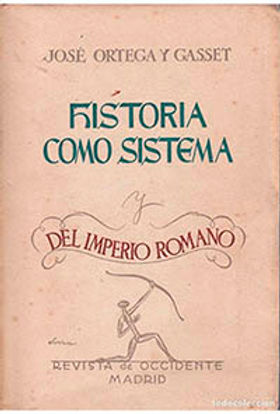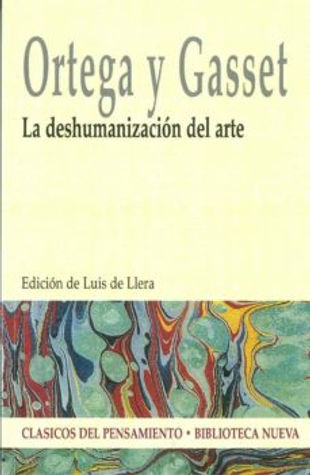Plays
Main Works:







© 2021 Created by Cristian González and Alvaro Lopez de Aguileta
Don Quixote's Meditations:
The Meditations on Don Quixote are the first book by the Spanish philosopher José Ortega y Gasset, published in 1914. It is a short essay, which was intended to be the first of a series of ten "Meditations" or "Salvages" that he did not carry out as such.
In the Meditations on Don Quixote, Ortega hinted at his later developed theory of "I am me and my circumstance."
The Dehumanization of Art:
The dehumanization of art is a work written by the Spanish philosopher José Ortega y Gasset in 1925. The work is considered one of the most accurate analyzes in the history of Spanish aesthetic thought, of which Ortega y Gasset would be interested on more than one occasion in several of his works. In this essay, we reflect on the rupture that the new avant-garde art supposes in the face of artistic tradition and its acceptance by the public.
The work was initially published by the Revista de Occidente, entitled The dehumanization of art and ideas about the novel.
the Rebelion of the mass
The Rebellion of the Masses is José Ortega y Gasset's best-known book. It began to be published in 1929 in the form of articles in the newspaper El Sol, and in the same year as a book. It is translated into more than twenty languages. He focuses on his concept of "mass-man", the consequences of development that would have led the majority to supplant the minority, character of these masses, "crowd", and of the agglomerations of people, and based on these facts, he analyzes and he describes the idea of what he calls mass-man: mass and the mass-man that composes it.
Hunting and bulls
His imperishable and brilliant work arises not only in the sense of its time, but the effectiveness of his rhetoric, to penetrate a world of ideas that encompasses history, customs, the secrets of the landscape, art, poetry, politics. , metaphysics and how could it be otherwise ... also the bulls.
His greatest contribution to bullfighting was the idea of the publication of the "Technical and Historical Treaty Los Toros", more popularly known as ELCOSSIO. Ortega with the same wisdom of a good bullfighting attorney signs Cossío, to undertake the most ambitious publishing adventure in the world of bullfighting. This is how he lets Cossío know through his relative José María de Corral, professor of Medicine, of his interest because it is he and not someone else who undertakes this publication.
History as a system
In History as a system, Ortega analyzes the crisis of Western reason as an instrument when it comes to explaining the human. For the author, to think is to dialogue with the circumstances, thus his philosophy emerges, as a manifestation and diagnosis of the crisis reaching the model of reason and the man of modernity.
Europe Meditation
José Ortega y Gasset is one of the great thinkers of European unity. In his early writings, he pointed out that Spain had to Europeanize in order to modernize. In "The rebellion of the masses" he proposed, at the end of the twenties of last century, the constitution of the United States of Europe. It is an idea that he never abandoned and to which he returned in his last writings, after the Second World War, such as his lecture "De Europa meditatio quaedam" and a small book entitled "European culture and European peoples", which until very recently was only known in German.